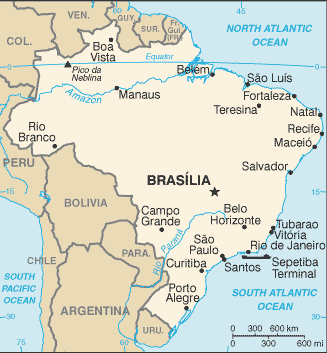 A harrowing report on National Public Radio Nov. 9 points to the possibility that the crackdown on favela gangs in the prelude to this year's contentious Brazil World Cup may have actually been a police extermination campaign of favela youth. On June 11—one day before the World Cup opened—two officers of the Military Police picked up three Black teenagers in Rio de Janeiro's Zona Norte. The three hadn't committed any crime, although they did have a history of petty offenses. The officers drove them up to the wooded hills of the Morro do Sumaré area, above the city. One was shot in the head and killed. One was shot in the leg and the back and left for dead. Another escaped. We know what happened because the officers left their patrol car cameras on, and the videos appeared on Brazil's Globo TV. One officer taunts the youths: "We haven't even started beating you yet and you are already crying? Stop crying! You are crying too much! Be a man!" The officers are then heard saying "Gotta kill the three of them." And finally: "Two less. If we do this every week, we can reduce their number. We can reach the goal." The "goal" was apparently a crime-reduction target ahead of the World Cup.
A harrowing report on National Public Radio Nov. 9 points to the possibility that the crackdown on favela gangs in the prelude to this year's contentious Brazil World Cup may have actually been a police extermination campaign of favela youth. On June 11—one day before the World Cup opened—two officers of the Military Police picked up three Black teenagers in Rio de Janeiro's Zona Norte. The three hadn't committed any crime, although they did have a history of petty offenses. The officers drove them up to the wooded hills of the Morro do Sumaré area, above the city. One was shot in the head and killed. One was shot in the leg and the back and left for dead. Another escaped. We know what happened because the officers left their patrol car cameras on, and the videos appeared on Brazil's Globo TV. One officer taunts the youths: "We haven't even started beating you yet and you are already crying? Stop crying! You are crying too much! Be a man!" The officers are then heard saying "Gotta kill the three of them." And finally: "Two less. If we do this every week, we can reduce their number. We can reach the goal." The "goal" was apparently a crime-reduction target ahead of the World Cup.
Brazil is one of the world's most violent countries, with 56,337 murdered in 2012. In the US, with 60% more people, there were under 15,000 homicides that year. But those statistics hide what NPR calls "a color-coded truth." Brazil actually has become a lot safer for white people in the past decade, with homicides among whites decreasing 24%—while among the Black population they have increased 40%.
"Those who are white tend to be able to afford [to] avail themselves of greater security, and we are seeing reductions in homicides," said Robert Muggah from the IGARAPE Institute, a global security think tank based in Rio. "Those who are Black...are unable to—as our societies become more and more unequal... and as a result [we] are seeing homicide rates going up." In other words, whites are increasingly retreating into well-guarded apartment complexes or gated communities. The rest of the population has to deal with a police force that in 2012 killed some 2,000 people—more than five a day. (From 2010 to 2012 in the United States, an FBI database showed that police killed about 400 people a year, about an eighth as many per capita.)
"The elite and the upper middle classes in a way tolerate a kind of repression—and in fact fuel it, and seek it," Muggah told NPR. "I think that there is this sense among the...whiter populations of Brazil, that the Black populations are the source of much of the vice and decay and violence in society."
Cross-post to High Times
Graphic: Perry-Castañeda Library Map Collection







Recent comments
1 week 5 days ago
5 weeks 3 days ago
9 weeks 3 days ago
10 weeks 2 days ago
20 weeks 2 days ago
24 weeks 2 days ago
25 weeks 2 days ago
25 weeks 3 days ago
46 weeks 3 days ago
50 weeks 4 days ago